Yes The News Is Terrible So We Might As Well Eat
More from su corresponsal de arte y viajes en Madrid
If the news coming out of the United States tells us one thing, it’s that you don’t have to be smart to be rich. Or apparently even mentally stable. All you have to be is ruthless.
You just have to be willing to do things that the rest of us wouldn’t even consider, or whose values and morals would stop us dead in our tracks.
I’m looking at you, Tony Soprano.
Ha ha! See! You thought I was referring to someone else altogether.
But this is about food. Eating. Enjoying life. I would never, ever inject politics.
Vamos! Let’s go.
Food shopping has been a bit of a conundrum this time in Madrid. Last time we were here and staying near the Antón Martín metro stop, there were superb open air markets plus an indoor market just around the corner. We thought that would be the norm wherever we stayed this time, too.
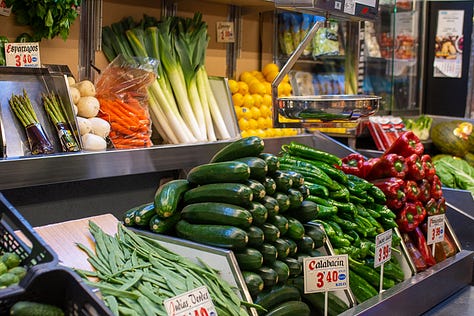

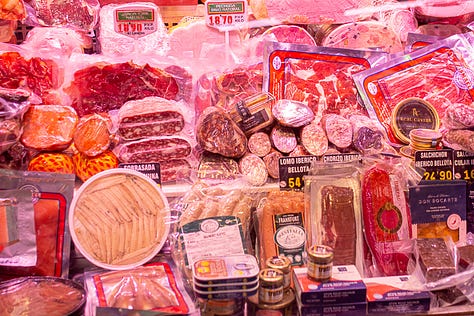
¡No es así!
This time we’re staying near Puerto de Toledo, and the corporate tiendas around us—Dia, CarreFour, and the like—aren’t so much grocery stores, they’re more just a step up from convenience stores in the United States, minus the display of beef jerky at the checkout. And much of their food is packaged in plastic or processed. Just like in the United States.
This made things a bit hard on our intrepid arts and travel writer (he/him/his) who has a few dietary restrictions to consider. Then someone I know here in Madrid happened to email me telling me about the indoor municipal food markets.
Guess what? The closest market to where we were staying was Antón Martín! About a mile and a half away on foot. Five kilometers round trip, if you want to talk like a European.
We’ve been in Madrid for almost two weeks now, and wage slaves in the United States with their allotted measly two week vacations, which many times they can’t take all at once (Europeans are guaranteed twice that, or four weeks if you’re mathematically challenged), think it’s amazing we’re spending almost five more weeks here.
But if you want to experience life in a country, not just see tourist sites, you need time. Six weeks barely begins to crack the nut.
After two weeks, it’s just in the past day or two that Sue and I finally have begun to fit our lives into the rhythm and pace of life here.
Un Comentario Editorial: The Spanish talk fast but walk like they’re in a funeral procession. I have never seen people walk this slowly in my life. If their houses were on fire, they’d never get out alive, they are that relaxed. They’d never make it in America.
The business of food shopping is a huge part of life here and it’s something tourists are missing out on. Antón Martín just happens to be between our apartment and the Reina Sofia contemporary art museum and the Atocha train station, two spots we’re frequently finding ourselves. It’s also near the English bookstore we frequent and where I recently bought Han Kang’s The Vegetarian and Miranda July’s The First Bad Man, and the one organic food store we’ve found in the city.
One man we met while waiting our turn at the fish monger, an Italian who works for Amazon selling cloud technology, was buying enough fish for two weeks to put in his freezer. Did he know something we didn’t, I wondered?
But most Europeans typically buy their food fresh everyday. So if we are to experience the Spanish life, Antón Martín was to become a part of our daily lives. Like brushing our teeth.
So now almost every day we set out with our shopping bags up the Calle de Toledo and take a left just before the Plaza Major in order to cut through the Plaza de Tirso de Molina.
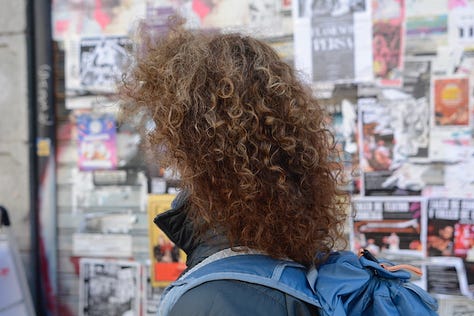


The market is on two floors. Upstairs are restaurants; downstairs is a mix. We followed the steps down.
The first thing I noticed was the smell of clean, fresh food. There is a special aroma, a kind of fragrance, to it. And coupled with that is cooking from the numerous restaurants preparing their menus for lunch.
In contrast, there’s a market near our apartment that scared the bejesus out of me. If this is where we have to buy fish and meat for the next three weeks, I thought, we’re doomed. It smelled like a loading dock. A strong smell of fish, but not the clean smell of fresh fish. I mean, fish smells like fish. I’m talking old fish.
Fresh, beautifully displayed meat and fish and vegetables is a sight most Americans don’t get to see. Our supermarkets are enormous, but if you’re as discerning (picky) as I am, much of that quantity is short on quality. I go to the store and I see meat that’s grey, and fish looks like it was hit with the knobby side of a pulverizing hammer. I rarely buy fish at our local big grocery store at home anymore, and Boston is right on the ocean. In the stores it’s all been frozen and shipped in from places as far away as Chile or Vietnam. The meat is ragged, like it’s been pulverized, and not firm.
Is it too melodramatic to say I almost wept when I first walked back into the mercado at Antón Martín? It must be my hormones acting up again.
This just isn’t food shopping. This is a communal event. Everyone is here because they chose to shop here instead of one of those corporate stores where everything is wrapped in plastic. Here there is a real love for food and I’m betting cooking, too, and people know this. Like art lovers together in a museum. A shared love of life.
And it comes out in the personal interactions.
Laughing and joking and smiling. No grumbling aloud.
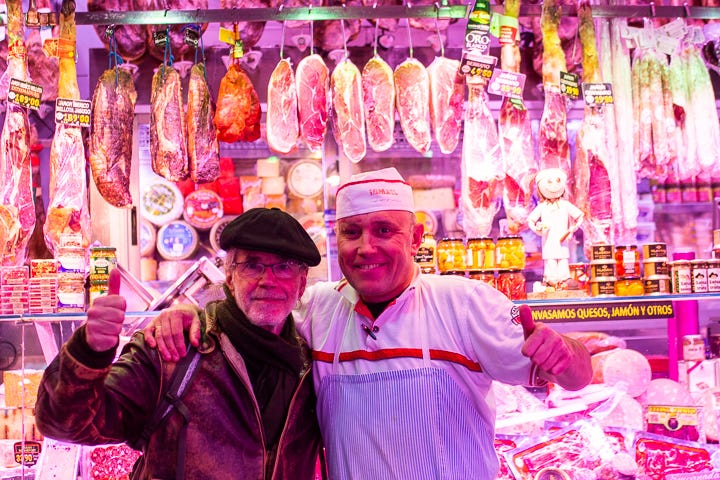
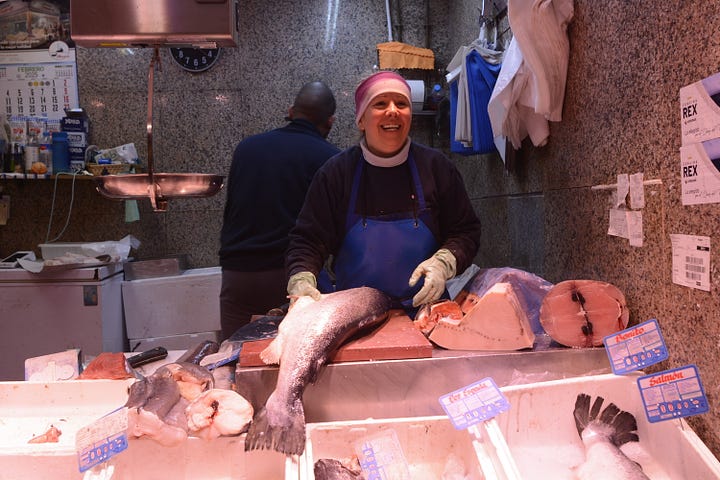
I’m going to refrain from comparing life in Spain with life in the United States. That wouldn’t be fair. I mean, don’t kick a country when it’s down, right? 8 )
But I’ve never really seen anything like this in the United States.
Sure, there are farmers’ markets in the United States. But not every day. And not all year. In Boston, there’s the famous Haymarket outdoor market year around once a week and loads of fun. But you have to be quick. When I moved to the city I’d buy produce, get it home, and find that it was passed its prime.
I learned from the old Italian women dressed in black from the North End who shopped there that vendors would load a bag up with produce from under the table, and not from the choice selection above. I learned to yell and haggle with the best of them. Good times.
I earned my city chops.
But the closest I’ve seen of something like Antón Martín in the United States today is the Boston Public Market. There the food is fresh, but expensive. In the United States, you have to pay a lot more for food that’s fresh or organic. Not here. And here at the markets there are restaurants where you can get a glass of wine and a range of culinary choices. At Boston Public Market, you can get pretzels, ice cream, and a corn beef sandwich.
No glass of wine.
But you can buy a handmade cutting board for a hundred dollars or so that seems pretty impractical to me in the kitchen.
It’s just not the same.
Also, you’d have to scatter markets throughout the city. Which isn’t going to happen.
This is why people like me travel to Europe after seeing the sites; we come back again and again to immerse themselves living the day to day life.
End of rant. Let’s eat.
We had a lot of choices but settled on Asian Army. How, you ask? It was S-, friendly and speaking Spanish with an English accent who runs Asian Army with his wife, who started the restaurant in London from a cart during Covid.
And the friendly kitchen and wait staff.
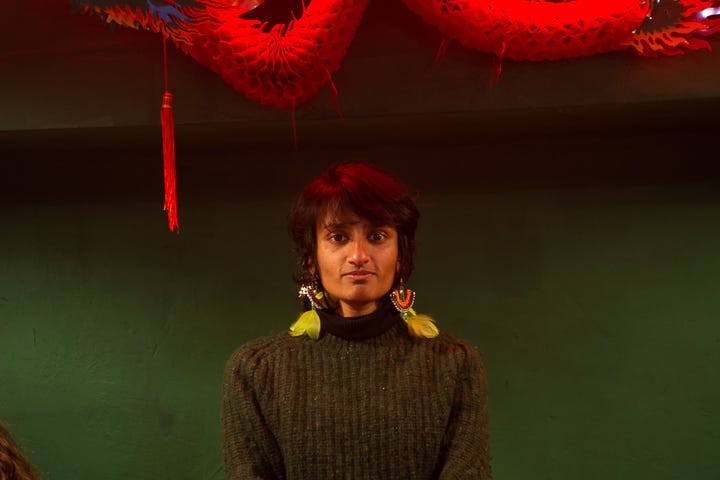

I recommend the nasi goreng.
And here I’m going to stop. I’m not going to disclose the conversations we have with the people we meet. The point of all of this is to get you, the reader, to put down the phone and get out and have your own conversations with the people you meet…from other countries and cultures.
That’s how we grow as humans. And that’s how you gain an understanding of the world.
And remember: Food is good….
Cell phone bad:




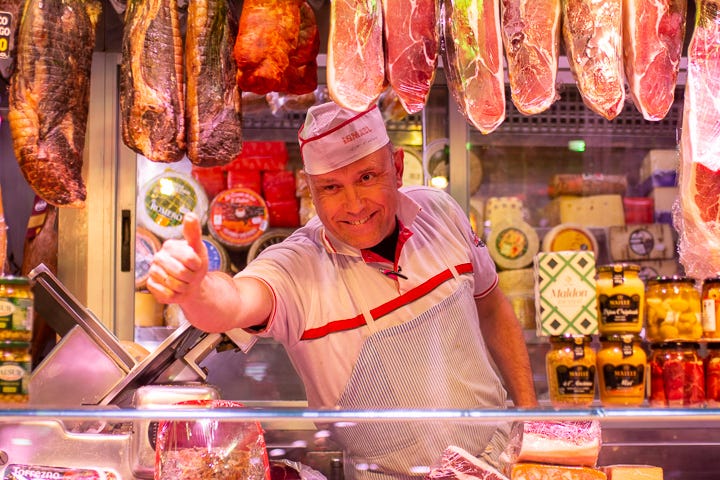

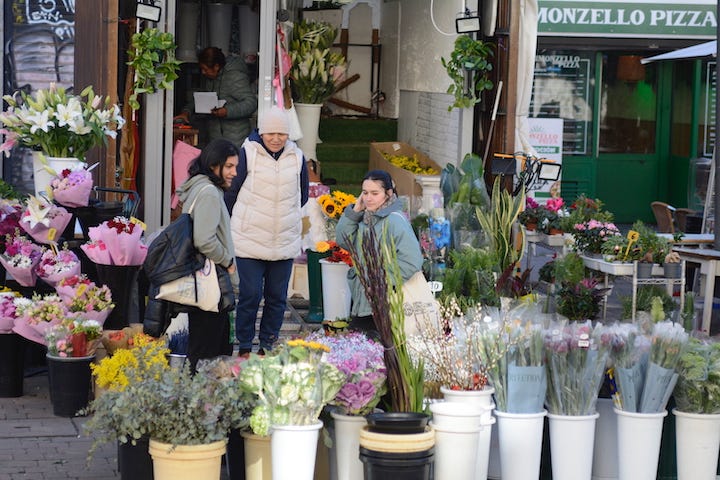
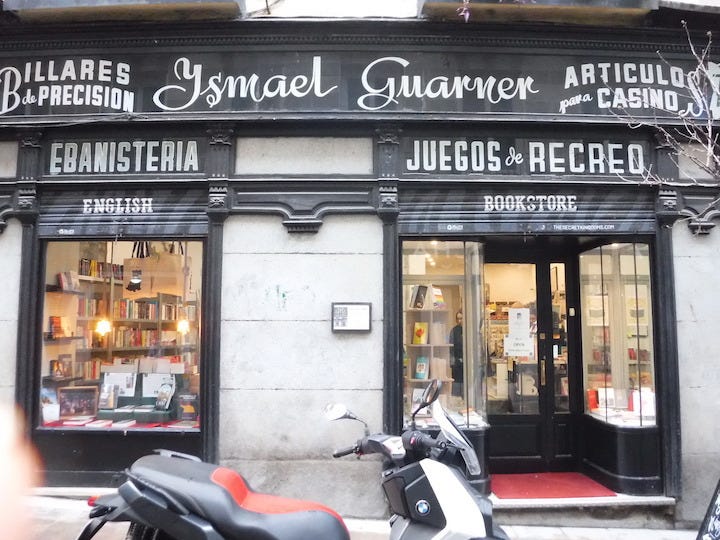

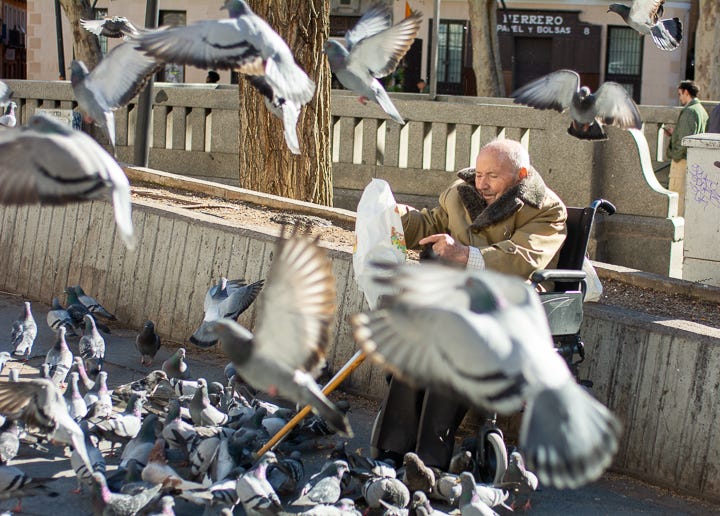



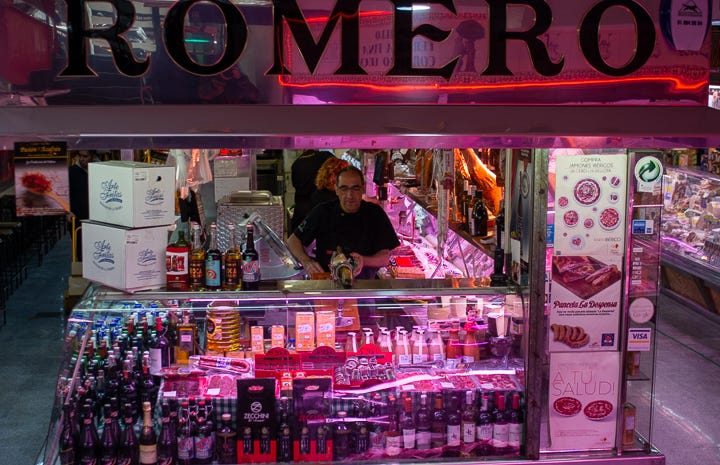
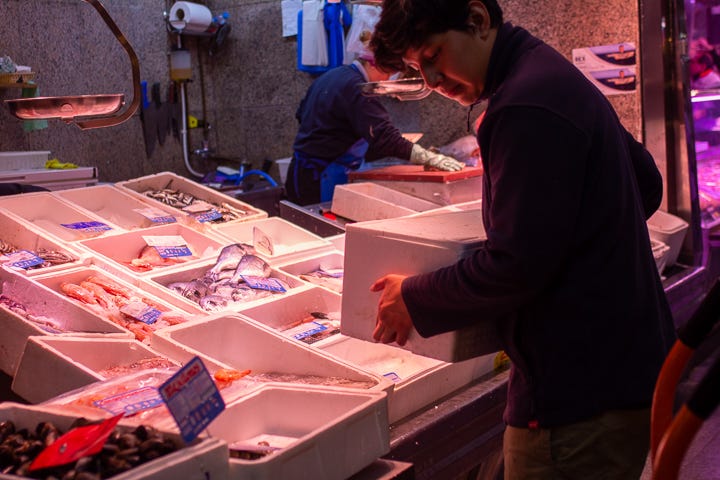
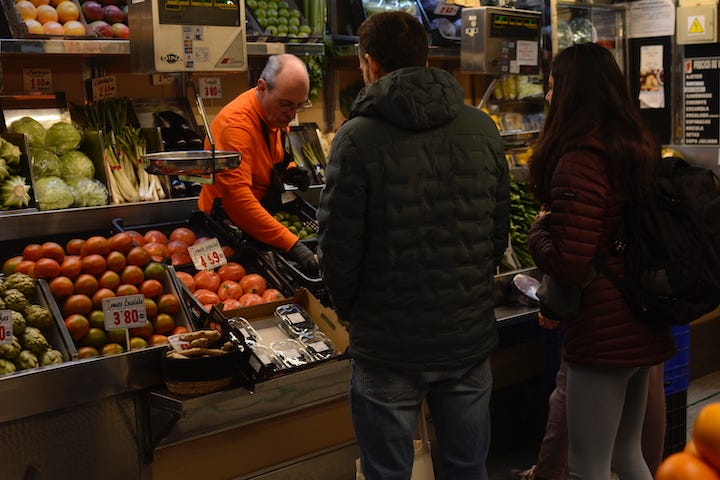
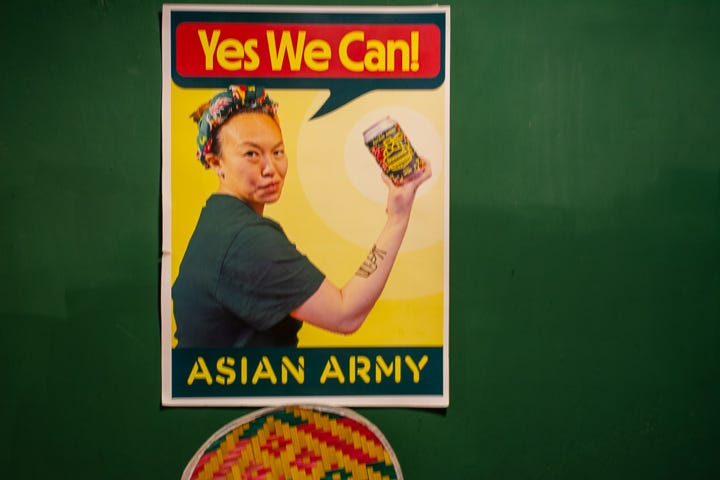
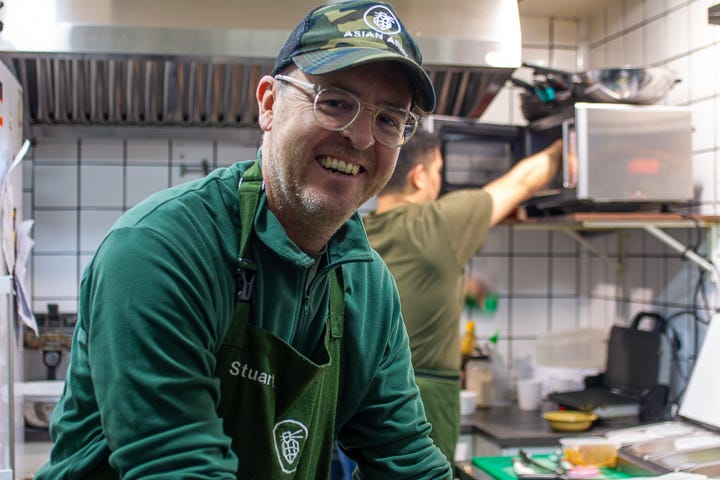
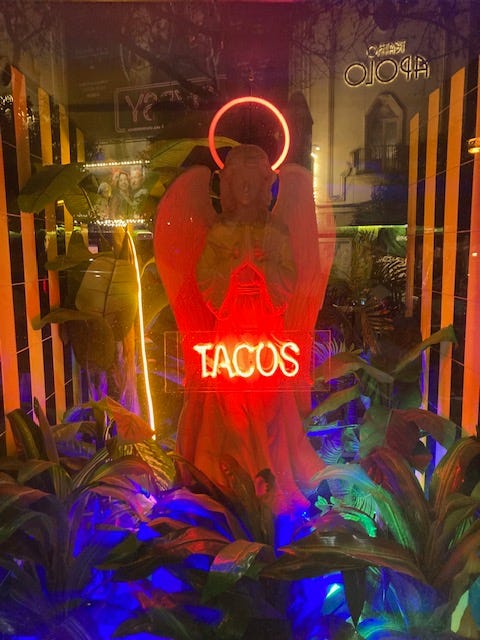

John,
Why not go home via Colombia. We’d love to see you and Sue. Crash here and then the four of us can head out and about. More great food. Slightly different Spanish.
Pete & Janneth